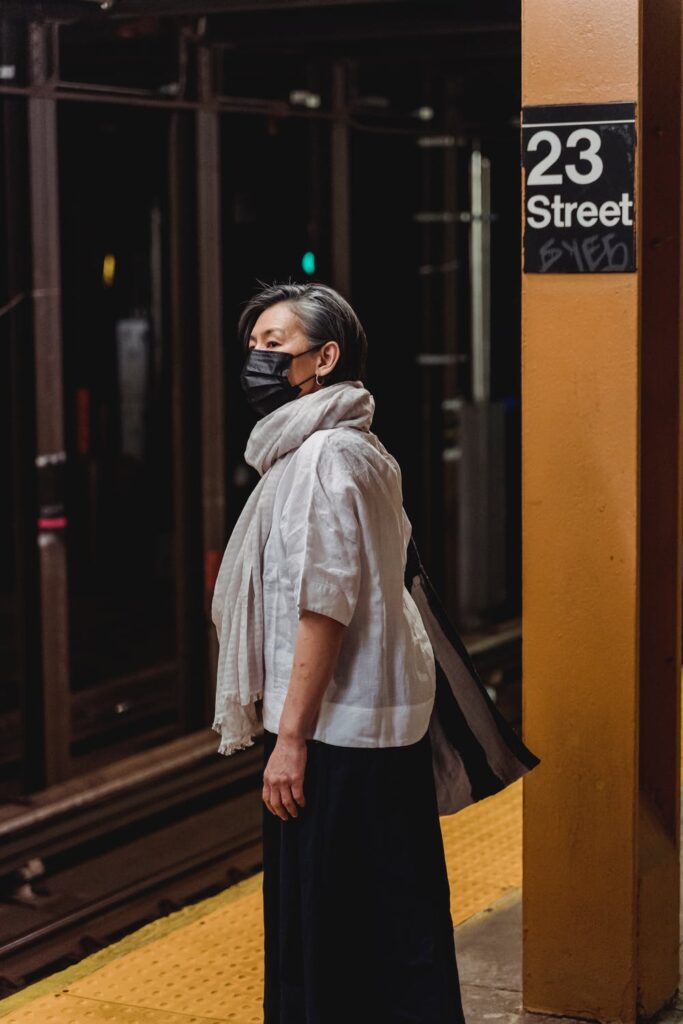
It’s been almost exactly one year since I posted the below and sadly, not much has changed. We are still seeing high-profile attacks against Asian Americans, and we are still seeing gaps in effective self-defense that takes into account the unique social and cultural experience of Asian Americans. I’ve started putting more work specifically into that area, with resources that are helpful for that community as well as others who need help being safer. One of those is my Self-Defense Resource Center, which starting to go live right now, and I hope you’ll take a look and share it with folks who might benefit from it.
Normally, On Her Own focuses on the kinds of issues that are especially relevant to women who are temporarily or permanently managing life without much in the way of outside help. Many of the topics are, of course, relevant to men, just as many of them aren’t relevant to every woman. I’d like to take a sidestep today though, into another area of danger. As a generation 1.5 Asian-American, I’ve been watching the rise in reported, apparently or potentially racially-motivated violence against Asian Americans across the country. Victims have primarily, but not only, been elderly. It’s a different kind of crime than many of us normally think about, because many of the attacks are happening without the sorts of warning signs we normally expect to see. They’re a lot more like iterations of the knockout game, if you remember that being a thing: folks trying to knock out a random victim with a single punch, just because. So what are some things we can do about this kind of attack, where the signs are minimal and the only goal of the bad guy is to hurt you and get away?
You may be able to prevent being targeted at all. Much of the reported violence has happened at all times of day or night, even in heavily trafficked areas, so just sticking to daytime hours and crowds won’t necessarily help you. However, many of the victims were alone at the time of their attack. Going out with a friend or in a group may help, as opposed to relying on generally having people around you. It hasn’t been a foolproof strategy, but at the very least it will mean you have immediate, reliable aid with you. To the extent that you can walk normally and with attention to the world around you, do that too. Moving with an obvious physical limitation and being distracted can make you a more likely target because let’s face it, a lot of these attackers aren’t looking to make their lives difficult. And of course, there’s something to be said for not being out at all: use a delivery service, get a relative to do your shopping for you, find an access-limited area for your daily walk. It’s not cool to allow fear of bad guys to limit our lives, but sometimes doing it for short periods can still be the better option, particularly if you know there is a particularly heightened danger of random crime.
There often are precursors that can indicate that danger may be imminent. When you’re out, look around for people who don’t belong or who are stopped in an unusual spot. If you stick with neighborhoods you are familiar with, it will be easier for you to spot someone who looks out of place or who isn’t acting normally for that area. Keep in mind that I’m not using this as code for racial profiling or similar strategies, and certainly not as a suggestion to confront someone for imagined future behavior. I’m simply saying that if someone doesn’t fit the regular crowd you’re expecting to see, then use that as a hint to pay a little bit more attention. And hey, look out for them not just for yourself, but because of others who may be in danger around you. Just remember that part of the game for many of these bad guys is to actively work on not being noticed until they act. Sometimes, they decide impulsively to do something violent, and do it in a place that they already happen to be, a place that they already belong. Situational awareness like this can be helpful, but it can’t be relied on. You might not know that an attack is going to happen until it has already started.
Sometimes, the attack will be verbal: rude words shouted at you. You might not even understand them and frankly, it might be better that way. Don’t give in to the temptation to get into a screaming match. Better to just ignore them and move on. The same response is appropriate if they’ve spat on you or ineffectually thrown something at you. Take the opportunity to go somewhere safe, like inside a store, and wait a while for the perpetrator to leave the area. Clean up if you need to – aside from the gross factor, spit has the potential to carry germs that can make you sick. If you were alone, you might call a friend or family member to come meet you so that you can leave together. Afterward, definitely take the time to understand and process that yes, something bad did happen to you and if you feel upset about it, that’s okay. If you don’t, that’s okay too. But you absolutely do not need to minimize the seriousness of your experience.
If you are actually physically attacked, you need to focus on surviving. The best basic skill set I know of for that can be found in this IAJJ Default Survival Position video, but here are the highlights: if you get knocked down, face your attacker, get and hold your elbows to your ribs, and try to do whatever you can to have at least one foot on the ground and your back not flat to the ground. There are a lot more details here, and more that can be added on in order to get further on the path to defending yourself, but this is a start to help keep you alive. Remember, too, to keep in your head that you want to make it through this attack. Don’t give up just because someone has tried to hurt you. Your death at their hands is not inevitable. You can defend yourself and you can fight to stay alive.
For those of you who witness these types of attacks, consider using your cell phone to start recording. That audio or video can be useful for prosecuting any crime that occurs. The victim may also want to hear or see it later on, as part of psychologically processing the incident. Instead of looking the other way, stick around to witness the attack and to help the victim later by providing information to the police, assisting them as much as you can, and waiting with them for help to arrive. You might decide to get actively involved during the attack itself, and that’s a personal decision you need to make. I’d urge you to think carefully, now, about whether and how you can do so in a way that doesn’t create an extra victim.
Either way, after it’s all over, report the crime! You may feel that you are “bothering” the police, but you aren’t. If it helps, you can report to a non-emergency number once you are certain you are safe, you don’t need medical care, and the incident is completely over. But even if you are “bothering” them, it is their job to respond, and you may need to in order to access victim resources to help you recover from the attack if you have suffered physical, emotional, or financial harm. If you think you may have been targeted for being Asian-American, you might also, or instead, want to report to @StopAAPIHate, which is a project that has been tracking violence against the Asian-American Pacific Islander population since the start of the pandemic. Of course, if that doesn’t apply to you, look for other community organizations that serve your population. Regardless, share your experience. I think you’ll find more support that you imagine.




